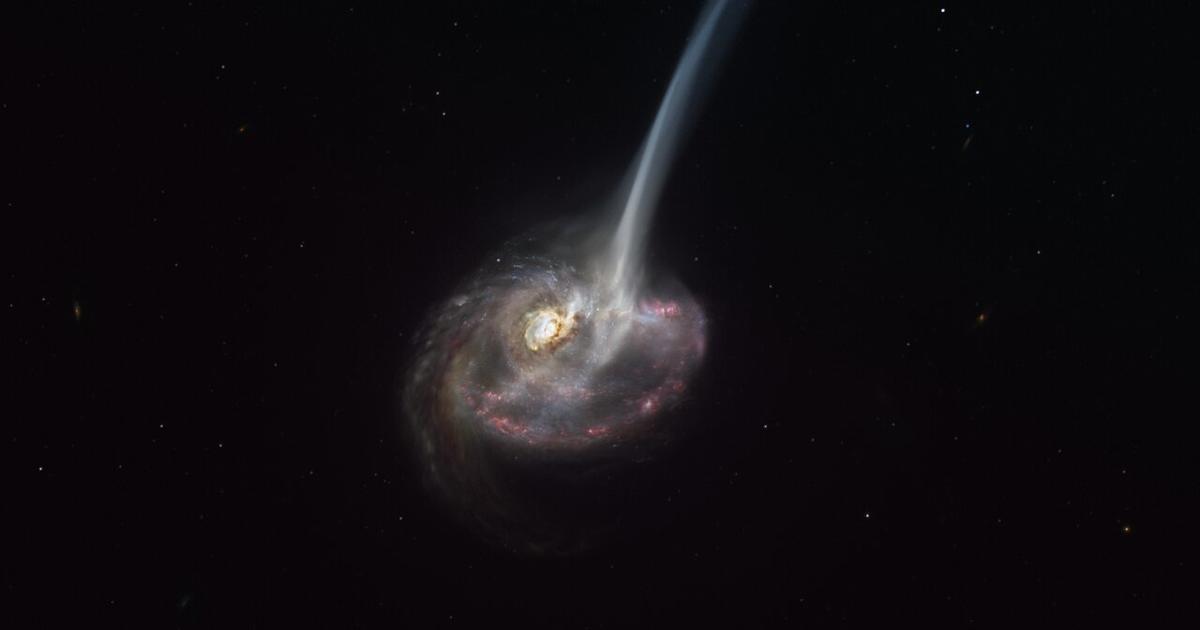Astronomers witnessed, for the first time, the death of a distant galaxy, which they described as “a truly extreme event”.
When all stars in the galaxy die, and new stars no longer form, the galaxy itself ceases to exist. This happens when all of the galaxy’s gas is expelled, making it impossible to form new stars.
according to a study Published Monday in the magazine Natural AstronomyScientists were “thrilled” to be able to capture this rare phenomenon recently, using the Atacama Large Millimeter / Sub array of telescopes in Chile.
Light from the ID2299 starburst galaxy took about nine billion years to reach Earth. So, when astronomers noticed it by chance, they saw the universe as it appeared only 4.5 billion years old.
Astronomers say ID2299 loses the equivalent of 10,000 suns of gas each year – which is what leads to rapidly depleting the fuel needed to form new stars. This astonishing gas release appears to be caused by two galaxies violently colliding and fusing together to form ID2299.
The galaxy is also currently forming stars at a rate hundreds of times faster than the Milky Way – using the remainder of its precious gas supply. For this reason, ID2299 is expected to die relatively soon, within a few tens of thousands of years.
European Southern Observatory
“This is the first time that we have observed a massive model galaxy forming stars in the distant universe that is about to die due to a massive cold gas emission,” lead writer Anagrazia Puglisi said. statement.
Astronomers believe that this phenomenon is the result of galaxies merging because they were able to observe the rare “tidal tail”, usually so faint that it cannot be seen in distant galaxies. Astronomers suggest that this elongated stream of stars and gas is the direct result of the galactic merger.
They only watched the galaxy for a few minutes, but that was enough to spot the elusive tidal tail.
“Our study indicates that gas emissions can result from mergers and that winds and tidal tails can look very similar,” says study co-author Emmanuel Daddy. “This may lead us to revise our understanding of how galaxies die.”
If astronomers are right that the merger resulted in a massive loss of gas, they will need to reconsider previous theories about how galaxies form and evolve – and how they die. Other theories have suggested that winds from active black holes or intense star formations are responsible for such deaths.
“The study of this single case revealed the possibility that this type of event may not be unusual at all and that many galaxies have suffered from” gravitational gas removal, “including earlier observations that have been misinterpreted,” He said Co-author Dr. Jeremy Finch.
“This could have disastrous consequences for our understanding of what actually constitutes the evolution of galaxies.”

“Appassionato di alcol. Piantagrane. Introverso. Studente. Amante dei social media. Ninja del web. Fan del bacon. Lettore”.


